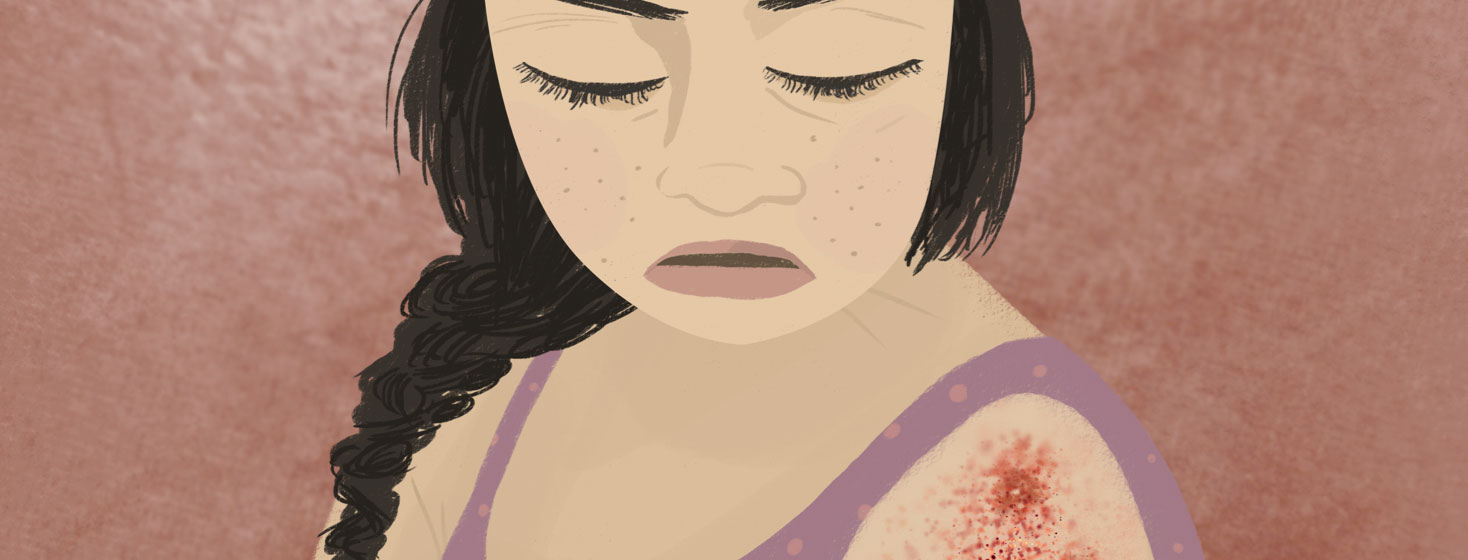Shingles and Psoriasis
Both shingles and psoriasis are serious skin conditions that can affect large areas of the body. Both can cause painful, red, itchy skin. While they have many similarities, they are two very different conditions.1,2
Before looking at the connection between the two conditions, it is helpful to know the basics of each.
What is psoriasis?
Psoriasis is a chronic autoimmune condition. With psoriasis, your body’s immune system is in overdrive. It attacks healthy cells as if there were an infection. As a result, new skin cells grow faster than they can naturally fall off (shed).1
This causes a buildup of inflamed, red, and raised areas of skin that often have a layer of silvery scales. These are called plaques, and they can be very painful.1
The type of psoriasis treatment you get depends on the severity of your condition. The most common type of treatment is steroids (corticosteroids). These medicines help fight inflammation and reduce symptoms. Steroids come in the form of topical creams and ointments, pills, or injections.1
What is shingles?
Shingles, on the other hand, is a very common viral infection. In the United States, about 1 in 3 people will have shingles during their lifetime.2
Shingles is caused by the same virus that causes chickenpox. It is called the varicella-zoster virus. After a person has chickenpox, the virus remains in their body but is inactive. Many things can trigger the virus to reactivate, including:2
- Stress
- Certain illnesses that weaken your immune system
- Specific medicines
Shingles occurs when the virus is reactivated. Anyone can get shingles, but it is more common among older people and those with a compromised immune system. Symptoms include:2
- Pain, burning, itching, and numbness where the rash appears
- Headaches
- Fatigue
- Fever
- Chills
- Upset stomach
Shingles can come with complications that are important to know about if you have psoriasis. These include:2
- Prolonged nerve pain (postherpetic neuralgia, or PHN). PHN causes pain, numbness, sensitivity, and itching. It can last several weeks and sometimes months after the shingles rash has healed.
- Vision problems or blindness. If the shingles rash gets near the eye, it can cause inflammation to the retina. This can do long-lasting damage.
- Skin infections. Having shingles on top of psoriasis can damage the skin further. If bacteria enters the rash blisters, they can get infected.
- Ear inflammation. This is more common if shingles occurs on the face. Inflammation in the ear can lead to hearing problems, balance issues, and temporary drooping on one side of the face.
The connection between psoriasis and shingles
If you have psoriasis, your immune system is weakened. This makes you more vulnerable to other conditions that attack the immune system, like shingles.3
Studies suggest that certain medicines used to treat psoriasis may increase a person’s risk of getting shingles. Such medicines include methotrexate. This may be because these drugs suppress the person's immune system.4,5
While having psoriasis makes you more at risk of getting shingles, researchers are still learning whether having shingles can trigger psoriasis. More studies are needed to fully understand the connection between the two conditions.
The differences between psoriasis and shingles
There are several important differences between psoriasis and shingles. For one, psoriasis is not contagious. You cannot catch psoriasis from another person. Shingles, on the other hand, can be passed to someone who has never had chickenpox.1,2
Shingles is transmitted by contact with fluid of the rash blisters that develop on the skin. If you have shingles, be sure to keep the rash covered until it is fully healed.2,6
Another main difference is where these conditions show up on the body. With psoriasis, common places are:1
- Scalp
- Elbows
- Knees
Shingles can occur anywhere on the body. It most often occurs on the torso, but it usually affects only one side of the body.2
Shingles generally lasts about 3 to 5 weeks. Symptoms typically go away once the rash heals. But psoriasis is a lifelong condition that comes and goes. A person with psoriasis can have periods when symptoms are at their worst (flare-ups) and periods when symptoms go away (remission).1,2
Getting appropriate treatment
Because a shingles rash can look a lot like psoriasis, you will need a doctor to do a physical exam to make a diagnosis. Your doctor may remove some skin from the rash to look at under a microscope (biopsy). With this test, they can diagnose psoriasis and rule out other conditions.1
While there is no cure for psoriasis or shingles, several treatments can help manage the symptoms of both. And, thankfully, there is a vaccine that can help prevent you from getting shingles.1,6
Preventing shingles by getting vaccinated
The shingles vaccine, Shingrix, can reduce your risk of getting shingles by 90 percent. Shingrix is approved by the US Food and Drug Administration (FDA) and is safe for use in people with psoriasis.3,6,7
The shingles vaccine is recommended for:6
- People age 50 and older
- People age 19 and older who have a compromised immune system
- Anyone who has had shingles in the past
Shingrix is given in 2 doses spaced a couple of months apart. Shingrix is not a live vaccine and only contains part of the varicella-zoster virus. This makes getting vaccinated safer for people with psoriasis and other health conditions.3,6
If you have psoriasis, talk with your doctor about getting vaccinated to help protect you from shingles.
Community Poll
Does your psoriasis management change with the seasons?

Join the conversation